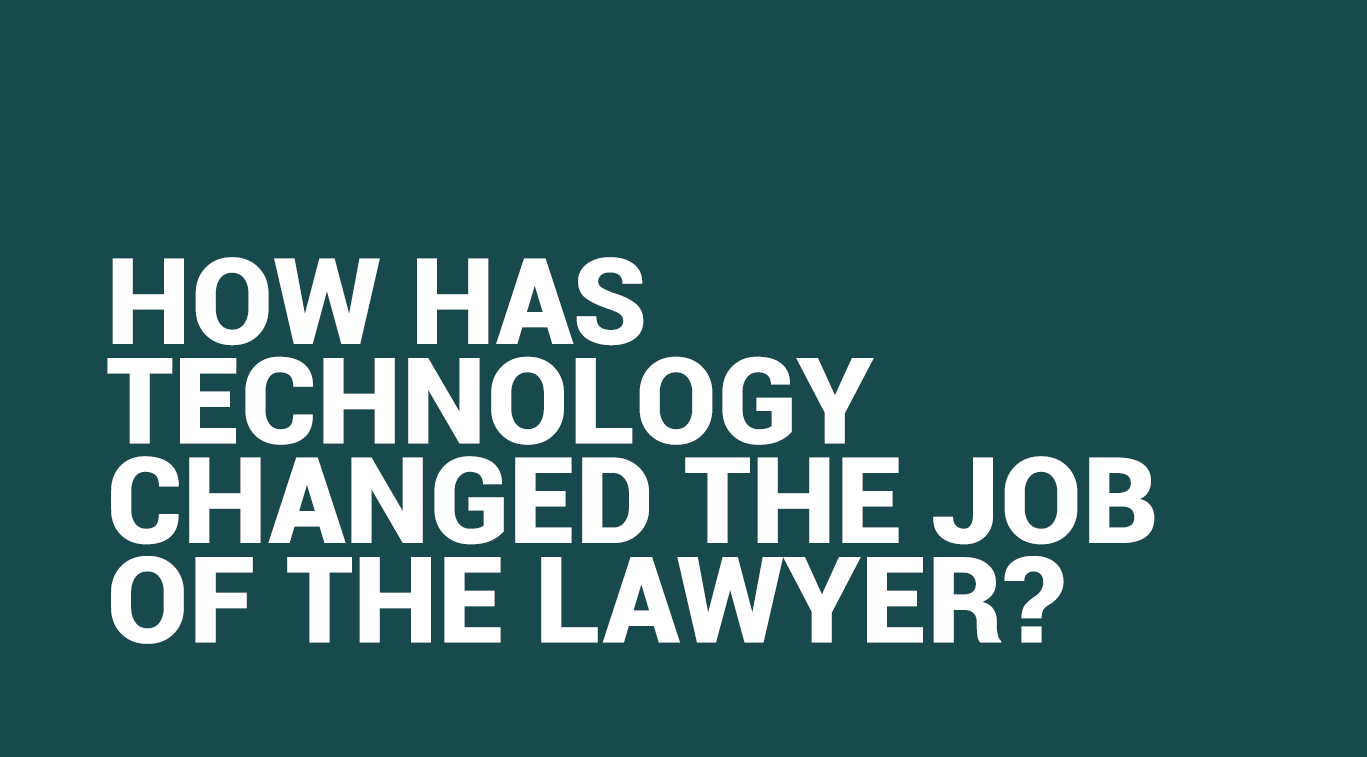The Spurring Technology Revolution in the Legal Sector

Written by Shrisha Sapkota
Blogger

Legal Technology or Legal Tech, is software and technology which is used by law firms or legal teams to facilitate their processes and improve their effectiveness[i]. Legal tech aims to simplify operations, optimize current workflows and improve the overall management of knowledge and information that exists in law firms or enterprises[ii]. They can help individual lawyers, law firms, medium and large scale businesses with a plethora of utilities including financials, office management, lead management, email integration, marketing, banking, reporting and organising calendars and documents.
How Has the Field of Law Changed?
Historically, lawyers have been resistant to embrace new technologies and innovation, but after the past recession in 2008, legal tech has been thriving with promises of changing the future of the legal industry. Though lawyers have long been described as risk- and, by extension, tech-averse, more firms are embracing tech solutions to streamline workflow and boost productivity[i]. Some have launched their own innovation arms or are partnering with legal-tech companies to give themselves a competitive edge[ii]. A field that has traditionally required people to rely heavily on expensive lawyers to navigate the complexity of the ever-changing legal system is now making it easier for regular people to get the advice and clarity they need, at a small percentage of the cost[iii].
Law’s tipping point is its transition from lawyer-centricity to a customer-focused approach which involves a series of shifts that include[iv]:
Lawyers-only to multidisciplinary and cross-functional collaboration
Reactive to proactive
Gut to data
Homogeneous to diverse workforces
Input to output
Hierarchical to flat organizational structures
Labor intensive to automated, AI-assisted solutions
Legal advice to business solutions
Inward-facing law guild to customer-centric solutions collaborator
It is believed that innovative firms tend to perform better, make more revenue and maintain better client relations than their older-school counterparts[v]. According to a survey conducted in 2019, it was found that organisations that are already leveraging technology have an early adopter advantage in terms of profitability and readiness[vi]. These organisations were said to be better suited to engage and participate in the emerging legal ecosystem. Nevertheless, harnessing the potential of technology will require a cultural shift by organizations, professionals and the legal industry as a whole[vii].
How is Legal Technology Affecting the Legal Industry?
Legal technology is changing how professionals in the legal sector are serving their clients, not just for quality services, but for offering an entirely new customer experience focused on easing the burden on both clients in-house and legal teams[i]. As law firms are being forced to be more flexible, efficient and cheaper than in-house teams, they’ve been deploying business processes, project management and fiscal responsibility. New tools, new skills, data-driven multi-disciplinary workforces and a customer service mindset are necessary for the digital era[ii]. For example, workflow and process automation tools for administrative tasks optimize resource management. McKinsey estimates that twenty-three percent of work done by lawyers can be automated by existing technology[iii]. A 2016 study by Deloitte predicted that approximately 114,000 legal jobs will be automated within the next two decades[iv]. According to their Insight Report from 2016, ‘profound reforms’ will take place in the legal sector, and almost forty percent of legal professions will be automated in the longer term. It further predicts that by 2025, the jobs in the legal system will encounter overwhelming changes due to technological development and a new lawyer client relationship, particularly the need to offer more value for money[v].
The global financial crisis and its reboot of the buy-sell dynamic of goods and services, globalization, astonishing advances in technology and digital transformation have convinced legal buyers that legal practice is no longer synonymous with the delivery of legal services[vi]. The legal industry is fragmented, growing, ripe for digital transformation and has a huge untapped market for its services[vii]. A growing number of corporate legal departments and customer-centric providers with corporate structures, economic models that reward output (results) rather than input (hours billed) are reshaping legal delivery[viii].
Moreover, tech-savvy clients are increasingly demanding more effective and efficient services which are usually delivered through legal tech. The legal buyers are driving change and have disaggregated legal practice from the delivery of legal services; and the lawyer-centric, labour-intensive, fragment led legal industry is ripe for tech and process-driven consolidation. Technology is impacting the legal industry in many ways: narrowing ‘practice’ and expanding ‘business of law’ (legal operations), creating new business models, accelerating the ‘corporatization’ of legal delivery (corporate models replacing the law firm partnership as the dominant structure), infusing capital, replacing stasis with innovation, producing a new buy/sell dynamic and rebooting customer expectations of how, from whom, and at what price legal services are bought and sold[ix].
Thomson Reuters has found that many traditional law firms are using advanced technology or are outsourcing a wide range of work to legal process outsourcing providers (LPOs). Typical activities being outsourced include mergers & acquisition (M&A) due diligence, litigation support, document review and administrative tasks[x]. While some companies in the market are stuck to traditional ways of doing business, others are turning into innovative law firms and attracting more customers by embracing the technology to optimize operations and improving the customer’s experience as well as building the trust of the existing ones, thus remaining competitive and staying on top of the market. Cutting edge technology has the potential to transform the delivery of legal services and possibly free time for most legal professionals, allowing them sufficient time to focus on the actual matters and the service of clients including pro bono work which benefits those who cannot afford exorbitant hourly rates of legal fees[xi].
The new delivery models are aligned with the needs of consumers, not the maximization of short-term lawyer profit. It is expected that technology will remove the cloak of mystery lawyers have long worn while delivering their services, thus enhancing transparency and alignment of the consumer with a provider, introducing predictive tools and compressing the lengthy resolution processes. It is believed that more than sixty percent of what lawyers do in their day-to-day activities could be automated by introducing automated solutions[xii]. Even the best experts can misinterpret the facts, leading to misjudgment and further reputational and financial damage to the organization, but the chance of human error can also be eliminated with automated technological solutions. It is a common complaint amongst in-house teams that their lawyers are overloaded and reducing this overload through the use of technology not only allows more focus on value-adding activities but also improves the lawyers’ work/life balance and reduces the frustration of repetitive tasks and questions[xiii]. Instead, they revert to doing more judgemental, strategic legal work and potentially add new areas of specialism[xiv]. For example, an Intellectual Property lawyer might add skills in the legal aspects of cloud, blockchain or digital Business Models which help the wider organization develop new products and services within a robust legal framework. Technology provides visibility about the services provided to the organization through dashboards and heat maps which demonstrate the value technology is adding and eliminates subjective evaluation[xv]. This data offers the opportunity to identify and optimize areas where improvement is required. This quantifiable performance promotes the increased tailoring of legal solutions which are relevant to the organization. Moreover, matter management includes collaboration and workflow management tools with real-time status reports and documents in one place, as well as tools for managing ongoing cases, enabling effective litigation management, budgeting and reporting[xvi]. Knowledge management includes statutes, precedents, court decisions, opinions obtained on behalf of the organization and regulations applicable to the business and entity management can provide a single source of truth containing information about each group member including shareholders, directors and filing deadlines[xvii].
Furthermore, applications of machine learning in the field of law can involve forecasting decisions, legal expert systems and argumentation or document modelling. Technology, process, data and other essential legal delivery components transcend geographical boundaries and can be scaled around the globe. The commonality of delivery challenges such as contract management, knowledge management, data collection and mining, morphing services into products, automation and other delivery elements far outweigh the differences between using legal tech or not. Thus, there is an enormous opportunity for consumers to benefit from a mature global legal marketplace where a myriad of local solutions is replaced by scaled, global ones. Legal departments own extensive data and using technology to structure data sets, improve their visibility and share it across the organization can change the perception of legal from cost centre to business partner[xviii]. For example, insights derived from an entity management solution may offer the opportunity to streamline the corporate structure, while analytics performed in contract management tooling enable to review contract clauses (for example to take advantage of an RPI uplift), manage the renewal of contracts with harmonized clauses that optimize the contract’s performance for the organization, and eliminate expired contracts.[xix]
In the book Online Courts and the Future of Justice, Richard Susskind argues that technology is going to bring about a fascinating decade of change in the legal sector and transform our court system and artificial intelligence and technology will help give more individuals access to justice. In fact, only about 46% of people have access to the legal system. Thus,it is believed that the introduction of technology in the legal systems will make justice more accessible and may also change the way courts are approached.
Cloud-Based Tools
The exponential growth in the volume of documents (mostly email) that must be reviewed for litigation cases has greatly accelerated the adoption of technology with elements of machine language and artificial intelligence being incorporated and cloud-based services being adopted by law firms[i]. Cloud-based tools enable applications to be run efficiently on third party servers and keep them connected to users. Over the next two to five years we can expect to see more extensive use of Cloud/SaaS solutions as concerns over privacy and security are allayed and because of the economics of buying technology in this way[ii]. Cloud has the additional attraction that all users get an immediate benefit as cognitive solutions improve accuracy. The rate of increase is faster because of the volumes handled compared to a single-enterprise, ‘on-premises tool,’ removing the need for extensive in-house storage[iii].
Systems are taking advantage of AI to create highly standardized documents such as non-disclosure or confidentiality agreements and robotic process automation for highly detailed but low added value, step-by-step tasks[iv].
The potential benefits are extensive, provided they reflect the strategy that the legal function has developed to support the organization as a whole and that the selection and implementation of the technology have been rigorous and effective[v].
Why GOOD LAW SOFTWARE?
GLS is an all-in-one legal practice management system that provides law firms with all the features necessary to efficiently run a law firm and equips them with tools they didn’t even know they wanted[i].
GLS is more customer-aligned, tech and process-enabled that integrates internal resources, aligns with others in the supply chain, provides easy access to clients and stimulates a culture of constant improvement by managing activities of workforces. Introducing legal practice management solutions provides a transparent overview of all procedures in your organization, both for clients and law firms. It also allows you to track the record of each of the lawyers working in the company. Having a customer experience-focused tool like that will eliminate unnecessary paperwork, improve communications, reduce time to get the desired legal services and minimize the necessity to meet face-to-face for certain legal services which will create a convenient and effective legal ecosystem.
References
[1] https://www.lexology.com/library/detail.aspx?g=78c11ed9-0787-4b26-b062-3c6a1222d8e1
[2]https://www.lexology.com/library/detail.aspx?g=78c11ed9-0787-4b26-b062-3c6a1222d8e1
[4] ibid
[5]https://observer.com/2016/12/legal-tech-settle-your-case-online/
[8]https://www.linkedin.com/pulse/technology-has-potential-transform-delivery-legal-services-ndila/
[9] https://lawahead.ie.edu/demystifying-and-assessing-ai-for-legal-services-delivery/
[12] https://www.cnbc.com/2020/02/06/technology-is-changing-the-legal-profession-and-law-schools.html
[13] https://www.legalmosaic.com/global-legal-tech-is-transforming-service-delivery/
[14]
[18] https://www.legalmosaic.com/global-legal-tech-is-transforming-service-delivery/
[20] https://www.linkedin.com/pulse/technology-has-potential-transform-delivery-legal-services-ndila/
[21] https://spd.group/tech-for-businesses/legal-tech-in-2021/
[22]https://www2.deloitte.com/global/en/pages/legal/articles/legal-technology-transformation.html
[23] https://www2.deloitte.com/global/en/pages/legal/articles/legal-technology-transformation.html
[24] https://www2.deloitte.com/global/en/pages/legal/articles/legal-technology-transformation.html
[25] https://www2.deloitte.com/global/en/pages/legal/articles/legal-technology-transformation.html
[26] https://www2.deloitte.com/global/en/pages/legal/articles/legal-technology-transformation.html
[27] https://www2.deloitte.com/global/en/pages/legal/articles/legal-technology-transformation.html
[28] Ibid
[29] James N Dertouzos, Nicholas M Pace and Robert H Anderson, The Legal And Economic Implications Of Electronic Discovery (Rand Institute for Civil Justice, 2008) 3; Pavan Mediratta, “Using Legal Data Analytics To Gain A Competitive Advantage”, LAW.COM (Webpage, 2017) <https://www.law.com/native/?mvi=80e16694159446d0ae29f6c93e95806c&slreturn=20200028224509>.
[31] https://www2.deloitte.com/global/en/pages/legal/articles/legal-technology-transformation.html
[32] https://www2.deloitte.com/global/en/pages/legal/articles/legal-technology-transformation.html








